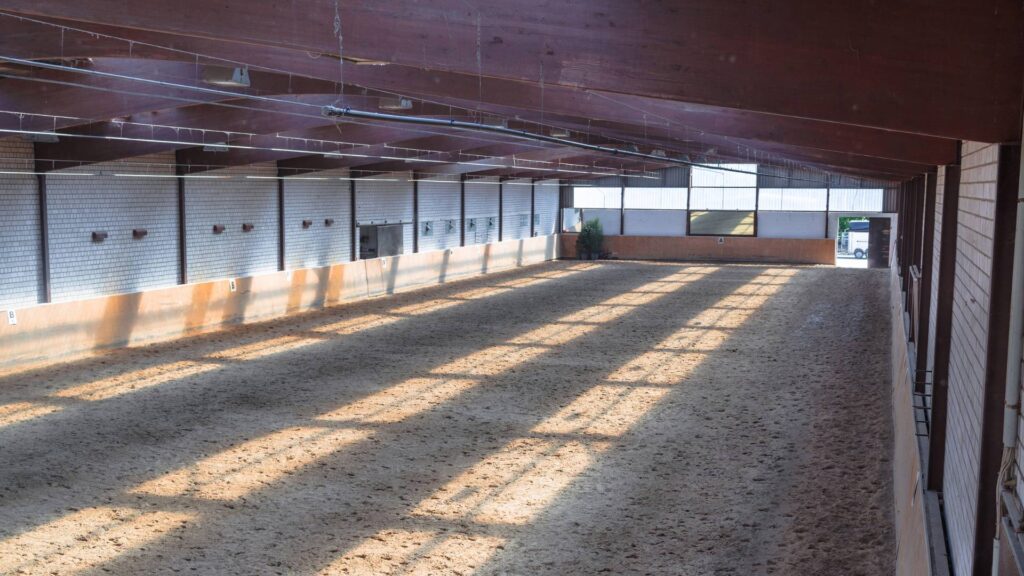Having a dedicated space where you can practice or train your horse sounds like a dream—but where do you even start? Designing a horse arena is no small feat, and it involves much more than throwing up some fences and calling it a day. In this blog post, we’ll walk you through the six must-knows for building an arena that will keep you and your horses happy.
1. Location, Location, Location
Pardon the real estate cliché, but it’s spot-on when talking about arena construction. Your arena needs to be in a place with easy access year-round. Consider drainage, wind direction, and the proximity to stables. Most importantly, don’t forget to check local zoning rules. You’d hate to build a dream arena only to be told you’re in violation of local regulations.
2. Size Matters
Okay, how much space are we talking about? The size of your horse arena will be dictated by what you plan to use it for. Training and competitive jumping may require more space than casual riding or pony lessons. A rule of thumb: The more versatile the intended use, the larger the arena should be. But remember, a larger arena will also have higher maintenance requirements.
3. The Surface Underneath
You’ve got a few options here, but sand and wood chips are the most popular choices. Your arena footing needs to be uniform, offer good traction, and be as dust-free as possible. And please, don’t skimp on this part; poor footing can cause a host of health issues for your horse. It’s the foundation of your arena, quite literally.
4. Give Me Shelter
The Bay Area’s climate is mild, but you still need to account for those rainy or extra sunny days. Opt for covered spaces, shelters, or at least install good drainage systems to avoid waterlogging your arena. Sun shields or natural shading options can also be a boon during summer months.
5. Safety is a Priority
Your arena must be a safe space. We’re talking sturdy fences that can withstand a bit of horseplay, rounded corners to prevent your horse from feeling trapped, and secure, gated entry and exit points.
6. Lights, Camera, Action!
If you’re planning on using your arena in the evenings or in low-light conditions, proper lighting is a must. Not just any lighting will do. Aim for even, shadow-free illumination. No one wants to take a jump they can’t clearly see.
Bonus: Expert Consultation
If you’re feeling overwhelmed by all this, don’t be shy about bringing in experts. An equine architect can help you customize your arena to your needs and avoid common pitfalls. They’re worth the investment if it means getting your dream arena right the first time.








